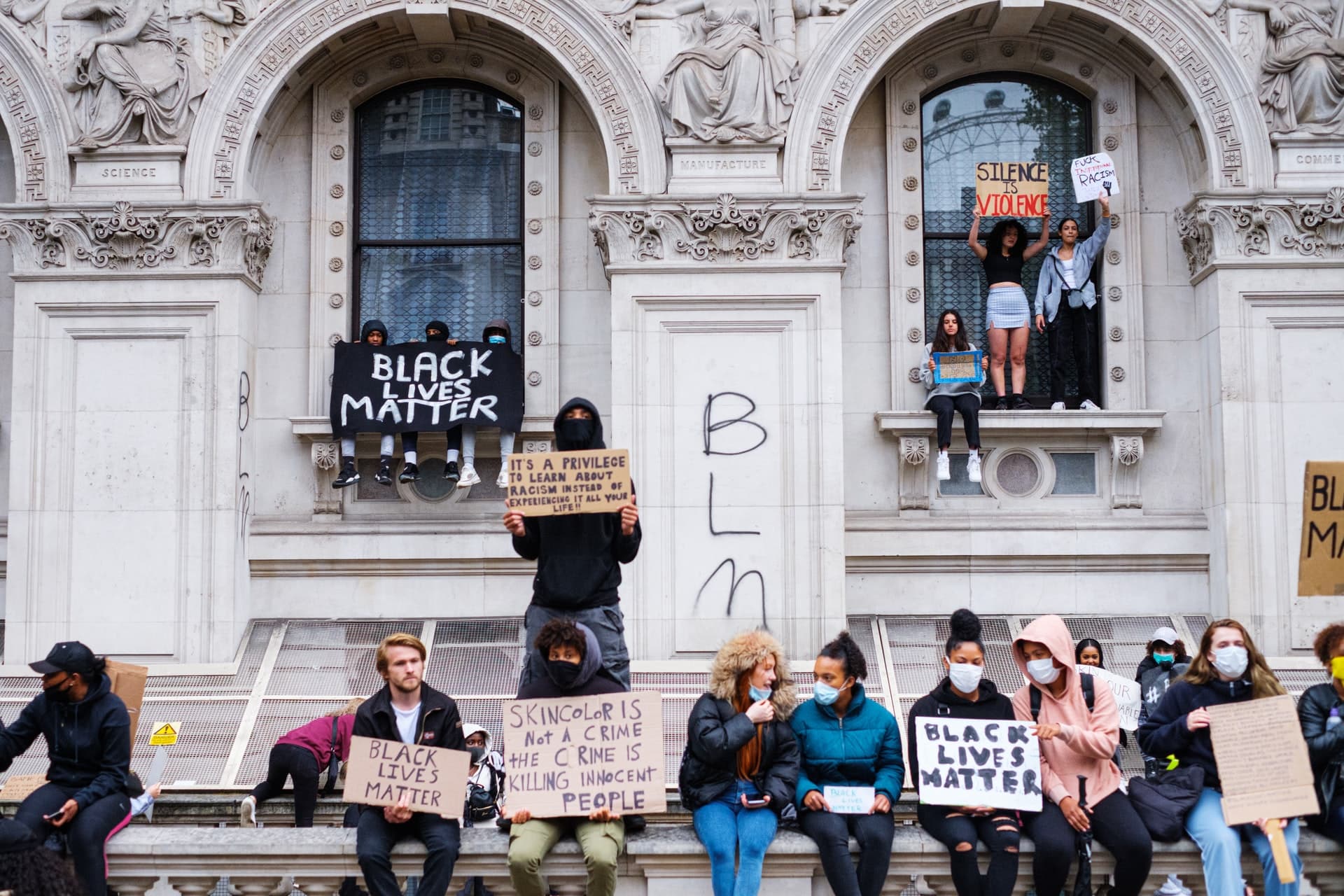For the past two months, it’s been near impossible not to be thinking about race. After the murder of George Floyd by Minneapolis police officer Derek Chauvin, protests erupted in cities around the world; and across news and social media, people have been trying to engage critically with racism in our societies. Ideas like police and prison abolition, and the atrocities of Europe’s colonial past, have been put squarely into the public discourse. But an issue that seems sorely missing from the conversation is that of environmental racism.
Environmental justice, more broadly, has been defined by academic Susan Cutter as “Equal access to a clean environment and equal protection from possible environmental harm irrespective of race, income, class, or other differentiating features of socioeconomic status”. Essentially, it’s an approach to environmentalism that considers not just aggregate environmental harm, but also how these harms are distributed amongst different social groups.
Being Black in the British Countryside
I spoke to Julian Agyeman, a Black British professor of Urban and Environmental Policy and Planning at Tufts University, hoping to gain a better understanding. Professor Agyeman was one of the first voices against environmental injustice in the UK, originally highlighting the problem of access to the countryside for BAME Britons.
Professor Agyeman studied geography and botany at Durham University, graduating in 1980. After becoming a geography teacher at a secondary school in Carlisle, it was school trips to the country that started his thinking about environmental injustice.
“Taking kids out in the Lake District, as a black teacher in front of a bunch of white kids, I was getting stared at. It made me wonder, why? I was wearing all the right gear, why were people staring? This brought up one of my first interests, ‘being black in the British countryside’. I was the first person to really talk about that, but I found many people had had similar experiences.”
The experience of social exclusion from natural spaces in the UK is something I’m personally familiar with. For each of our 12th birthdays, my granny bought my siblings and me National Trust life memberships. I remember on one occasion, my older brother was questioned at the entrance, being told “you can’t use other people’s memberships”. It’s not hard to guess why it was assumed that a mixed-race kid couldn’t be the actual owner of the membership.
The exclusion of BAME Britons from natural spaces is not just based on personal anecdotes though. A 2018 report from Natural England states that 63% of the white British population visited green spaces weekly, while just 46% of the BAME British population visited green spaces at similar rates.

Race, Class, and Research
Environmental racism in the UK goes beyond the relationship of BAME Britons’ to the countryside though. For example, in another 2019 report, Natural England found BAME Britons are exposed to particulate matter pollution at rates 19-29% higher than White Britons.
This same report though, states that research into injustice related to race has been lacking in the UK:
“Inequality with respect to ethnicity appears to exist in the UK, but rather little work has been done, and there is a limited understanding of the extent to which the few UK environment-ethnicity observations are mediated by income.”
Professor Agyeman felt the same, saying “there is good environmental justice research going on in the UK, but it’s not explicitly around race, it’s more about socio-economic conditions.”
The relationship between socio-economic status and environmental harm seems to be widely accepted in the realm of environmental justice research in the UK, and the numbers are hard to argue with. A 2010 study found that the most economically deprived areas experience carbon monoxide pollution at around 32% higher concentration than the least deprived; sulfur dioxide pollution at around 46% higher concentration; are twice as likely to be within close proximity to industrial sites, and contain around 40% less green space.
Despite this class focus, the issues of racial inequality cannot be escaped. As Professor Agyeman said to me, “socio-economic status is a proxy for race”, which is due to the glaring intersection between class and race in British society.
According to the UK government, 58% of Asian households and 62% of Black households fall into the bottom two income categories, compared with just 38% of white households. Considering the other side, just 26% of Asian households and 22% of Black households fall into the top two income categories, while 42% of white households falling into this category. So even if environmental injustice is primarily an issue of class and income, when BAME Britons are disproportionately low income, this is still environmental racism.
RELATED ARTICLES: 5 Resources Your Business Can Use To Fight Racism |We Stand Against Racism Everywhere |Why Sustainable Fashion Must Converge With Intersectional Environmentalism |Black to the future: Afrofuturism and Black Subjectivity |The Extensive Effects and Implications of the ICE Student Ban |Environmentalists Should Pay Close Attention to the Racial Justice Movement | From “Go Home” Comments To “Go Home” Vans: The Normalisation Of Xenophobia |Impact of a Murder: Addressing Police Brutality
One Size (Won’t) Fit All
In my conversation with Professor Agyeman, it was clear he felt that to address these issues of environmental racism, it would take a big shift in our discourse, telling me that “the need is for a holistic look”.
This means accounting for the way that race and income intersect in the UK, but also broader issues that may not seem immediately related. For example, the fact that just 9.6% of professors in the UK are BAME while making up almost 13% of the population; and how this could contribute to the lack of academic research into the problems faced by BAME Britons. We can also consider how environmental racism relates to the greater health risks often faced by BAME communities. COVID-19, for example, has been found to kill black men at twice the rates of white men.
The most important thing I took from my conversation with Professor Agyeman though, was the need for social movements to be mass movements, operated from the ground up; including the movement for environmental justice.
The idea that environmental justice must be approached from the perspective of grassroots organization and engagement is extremely prevalent in modern literature, but it also has a history in environmentalism.
Ecologist and political activist Murray Bookchin emphasized this idea, particularly in his 1964 essay Ecology and Revolutionary Thought. He argues that centralized and top-down governance harms not just individuals and their communities, but also inflicts massive damage to our environment.
Bookchin focused on classic ecological concerns, like agriculture and energy production, making the case that sustainable practices require an intimate understanding of the local landscape and its ecological limits. According to Bookchin, this “presupposes a far-reaching decentralization of society and a truly regional concept of social organization.” This would mean a shift in our approach to governance in the UK, away from the centralized state, and into a system that relies on greater local empowerment and autonomy.
While Bookchin himself wasn’t considering issues of environmental injustice, it’s not hard to see how his ideas are applicable. There’s no “one size fits all” solution to environmental injustice, every community is different, and so will need to take different steps to ensure that all its members have equal access to the environment.

Taking Environmental Justice
Professor Agyeman coined the term just sustainability to refer to environmental justice. In the same way that classical sustainability requires an intimate understanding of the local environment, just sustainability requires an intimate understanding of the local community. So, if we’re to solve the issues of environmental racism in the UK, and the broader concerns of environmental justice, it must be from the perspective of local organization and empowerment.
Fortunately, there are activists and campaigners working to address environmental racism in the UK, and they’re recognising the need for local engagement.
Maria Adebowale-Schwarte founded the Living Space Project (LSP), a think tank focusing on urban placemaking and green space. The LSP has supported initiatives like the Academy for Greener Jobs and Skills, aiming to facilitate green jobs across Greater London. There was an emphasis on working with communities and industries often excluded from the green economy. For example, they partnered with the London College of Beauty Therapy to help make the local beauty industry more sustainable.
The Ella Roberta Family Foundation was set up by Rosamund Adoo-Kissi-Debrah, in memory of her daughter, who died tragically due to severe asthma. Ella’s death, at just 9 years old, was linked to a spike in air pollution, with nitrous dioxide and PM10 concentrations at higher than legal levels. The foundation’s goal is to raise awareness about childhood asthma and air pollution, particularly in Lewisham, the London borough where Ella lived.
Neither Adebowale-Schwarte nor Adoo-Kissi-Debrah talks explicitly about environmental racism. But, by fighting environmental issues in urban, working-class communities, they’re addressing exactly that.
The struggle against environmental racism is still far from being won, but it’s only through continual local action that we can create an environment that works for all. In the words of Professor Agyeman, “Social justice never simply happens.” We have to take it. “The Man’ isn’t going to deliver us environmental justice.”
Editor’s Note: The opinions expressed here by Impakter.com contributors are their own, not those of Impakter.com










